Windows 11 Market Share: Mid 2023 Stats
Find out the latest numbers for Windows 11
13 min. read
Updated on
Read our disclosure page to find out how can you help Windows Report sustain the editorial team. Read more
Key notes
- The recent results for Windows 11 are surprising and have got many talking about the potential held by the latest iteration.
- According to the Steam hardware survey data, the adoption rate of the latest iteration among gamers is pretty impressive.
- Microsoft plans to release several new user-oriented features, which should increase the adoption rate even further though some concerns are yet to be addressed.
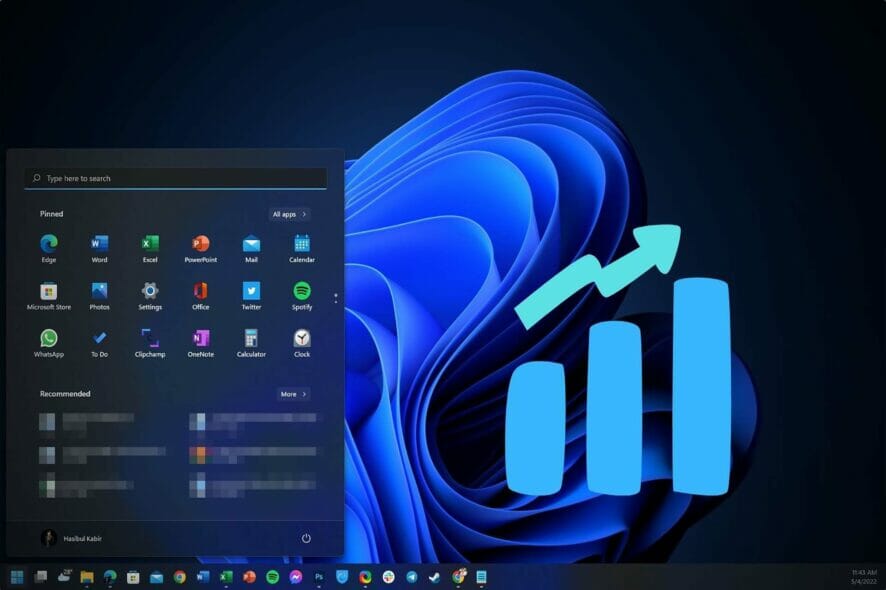
Are you curious about the user base of the latest Windows iteration? This article features the current state of the market share of Windows 11 in 2023, the iteration set to replace Windows 10, one of the most successful to date.
If one were to read the Windows 11 review, it would be evident that the latest iteration seems like an upgrade. However, the new OS was criticized, particularly for the strict system requirements and design inconsistency.
Despite all that, users are still upgrading to this new OS. Now, the question is, how many people have finally upgraded to the latest iteration, and how is Windows 11 fair in terms of market share?
Windows 11 stats
On June 24, 2021, Microsoft, to everyone’s surprise, revealed Windows 11 and released the first build within a few months on October 5, 2021. In a virtual event, Panos Panay announced the latest OS.
But, a few weeks before the official announcement, the media got a whiff of something big happening and speculated the release of a new iteration. The initial builds of Windows 11 were relatively unstable, but that was expected, and things did improve.
After a week, Microsoft released an update, 22000.258, which included patches to some bugs. Currently, the latest iteration has more than a dozen updates. Also, the first major update for Windows 11, 22H2, was released in September, though it had a few bugs.
Windows 11 certainly isn’t the success many might have imagined, but it’s slowly catching up. Besides, a major reason behind the slow growth is the requirement for TPM and Secure Boot, something missing in most older PCs.
According to Statcounter’s November 2022 report, which shows the latest data about operating systems and browsers, the newest iteration is doing quite fine.
Windows market share by version
Windows is the first choice for most PC users worldwide because of its flexibility, software availability, compatibility, and larger community. Therefore, we have taken two sources to know the market share of this OS. Here is what we have found:
StatCounter data:
According to StatCounter, around 75.11% of computers will run Windows in 2022. The figures for individual iterations may surprise many, given that many users are still running the older ones.
Here is an overview of Windows market share by iterations in 2022:
Here’s a table depicting the market share of Windows 11 and the previous iterations as of Nov 2022, using the data sourced from Statcounter.
| Windows OS | Market Share in % |
|---|---|
| Windows 11 | 16.13 |
| Windows 10 | 69.75 |
| Windows 8.1 | 2.53 |
| Windows 8 | 0.79 |
| Windows 7 | 10.25 |
| Windows XP | 0.4 |
| Other versions | 0.15 |
We can see that Windows 10 is still the most used iteration, followed by Windows 11 and Windows 7. The other iterations have a fairly low market share, further decreasing over time.
Based on some versions, a graph compares the Windows version market share over the last ten years (2012-2022).
Each release of a new version of Windows has a significant impact on the market share stats. Similarly, with the release of Windows 11, the share of Windows 10 continues to decline, as is evident through the various graphics presented here.
It has been interesting seeing the transition from how the latest iteration was first received by the public to how users are upgrading to Windows 11 on a daily basis.
Back in November 2021, Windows 11 had just reached approximately 10% of the market share. Also, over 24% of Steam users have already switched to Windows 11, and both are rising at an increasing rate.
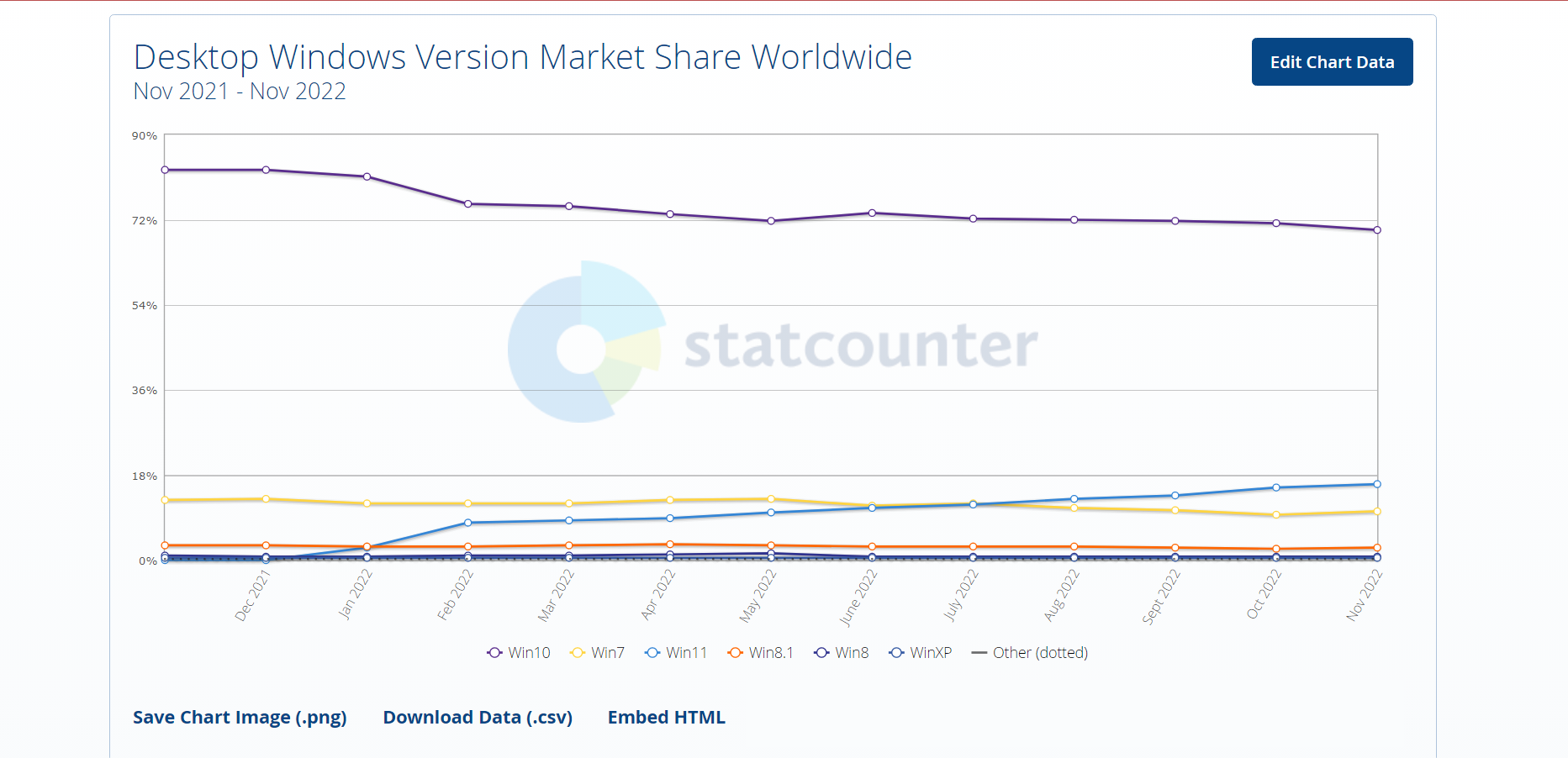
Judging from what Statcounter had to say, in November 2022, Windows 10 dipped below the 70% mark for the first time in history.
But even though Windows 10 remains king of the hill, its market share is slowly decreasing as its successor becomes increasingly popular.
In fact, Statcounter claims Windows 10 now sits at a 69.75% mark, representing a 1.51-point decrease compared to the previous month.
As for the newest operating system (Windows 11), know that it’s not breaking any speed records, but it still gains more and more ground, keeping a relatively slow but steady pace.
This November 2022 report indicates that Windows 11 is now at 16.13%, with a 0.68% change compared to October.
If you are also wondering about the older Windows versions, know that Windows 7 remains the third most popular operating system, with a market share of approximately 10.24% (+0.62).
The Redmond tech giant plans to end the Extended Security Updates program for Windows 7 early next year, so expect the OS’s market share to go down a little faster.
Windows 8.1 and 8 have 2.53% and 0.79% market shares, respectively, at the moment. Remember that these versions are going out of service in January 2023, so you better prepare.
Let’s move on to Windows XP, a now eight-year-old dead and unsupported OS, which still holds strong with a 0.4% market share.
With more than 1.5 billion active devices, Windows is still not the most popular operating system, which in fact, is Android, with a 43.43% (market share.
Windows comes in second with 29.3%, and iOS is in third with 17.22%. These numbers are changing each month, by the way, so we’ll keep an eye out.
AdDuplex data:
AdDuplex is also monitoring the Windows 10 and 11 market share. According to their latest data, Windows 10 has nearly 76.1% market share, and Windows 11 (including Insiders build) has 23.9%.

| Windows OS | Version | Market Share in % |
|---|---|---|
| Windows 11 | 21H2 | 23.1 |
| Windows 11 (Insiders) | 0.8 | |
| Windows 10 | 21H2 | 38.2 |
| Windows 10 | 21H1 | 23.9 |
| Windows 10 | 20H2 | 3.8 |
| Windows 10 | M20U | 5.2 |
| Windows 10 | N19U | 2 |
| Windows 10 | M19U | 1 |
| Windows 10 | O18U | 2 |
AdDuplex data also indicates that the usage percentage of Windows 10 is pretty impressive. However, it doesn’t show any Windows 11 market share by version, unlike Windows 10.
They do not show any Windows 7 market share statistics in 2022. So, as a result, StatCounter data is more acceptable if we talk about this desktop OS usage percentage based on the versions.
How much market share does Windows 11 have?
As of November 2022, Windows 11 has a 16.13-23.9% market share per different available data sources. However, achieving this took over a year, which cannot be ignored. But there are several factors at play here.
According to recent news, 1.4 billion devices are running Windows. But how many people are using Windows 11 right now? Unfortunately, we cannot give you an exact number.
Based on the total Windows users and the latest market share stats, there may be an estimated 0.226 billion or almost 226 million devices running Windows 11. In contrast, Windows 10 is running on over a billion computers.
Remember, this is an estimate based on the data, not the actual number. One individual may have multiple devices. So, it is tricky to estimate the number of users.
We saw that PC users rapidly upgraded to Windows 7 and 10 after their release. So, Windows 11 is not doing well compared to its successful predecessors? Let’s see.
Windows 11 adoption rate in 2022
Since its release, the latest OS has been well-received by users. But, because of the strict system requirements, many thought it might have difficulty achieving a decent user base. But, in reality, it is doing slightly better than the prediction.
Though Windows 11 was released in October 2021, many people started upgrading in January. It might be because they waited to be sure it was not another VISTA or Windows 8.
Since then, it has been slowly gaining a user base. If we compare the month-to-month market share percentage of Windows 11, we get the following:
| Month | Market Share in % |
|---|---|
| January 2022 | 2.6 |
| February 2022 | 7.89 |
| March 2022 | 8.45 |
| April 2022 | 8.91 |
| May 2022 | 10.08 |
| June 2022 | 10.96 |
| July 2022 | 11.77 |
| August 2022 | 13.08 |
| September 2022 | 13.61 |
| October 2022 | 15.45 |
| November 2022 | 16.13 |
We can see that in January-February, Windows 11 got the new users at the highest rate. However, the AdDuplex data indicate a different thing. But, one thing is common. According to both data sources, the adoption rate of Windows 11 has slowed a lot in recent months.
In March and April, the Windows 11 market share increased by an almost insignificant amount, contrary to Windows 10 21H2, which got 6.5% new users.
Windows 11 usage rate by the gamers:
If we compare the usage of gamers, the data is a bit different. Windows 11 has been attracting more gamers since its release. To get an idea, we have looked at the Steam survey.
According to the latest data, almost 27.98% of Steam users have upgraded to the latest Windows OS until November 2022, and usage is increasing rapidly. If we look at the data since December, we get the following results:
| Month | Usage % |
|---|---|
| Dec 2021 | 10.55 |
| Jan 2022 | 14.10 |
| Feb 2022 | 16.18 |
| March 2022 | 17.44 |
| April 2022 | 19.66 |
According to the available data, PC gamers are upgrading to the latest iteration more than general users and that could be due to the optimized gaming performance in Windows 11.
What are the factors that affect the market share?
Some significant facts played a substantial role in the market share statistic. After doing some research, we have found the following:
1. Strict hardware requirements
As Windows 11 has a stringent hardware requirement, many users could not upgrade. At least 4 GB RAM, 1 GHz dual-core processor, UEFI, Secure Boot capable firmware, and DirectX 12 compatible graphics are necessary to run the new operating system.
This is not the only story. It would be best to have at least an 8th-generation Intel processor or a 2nd-generation AMD Ryzen processor. Microsoft later added some specific models of Intel’s 7th gen processors to the supported CPU list.
Even if you have better specs, it doesn’t mean you can run this OS because of the security processor requirement.
TPM 2.0:
Windows 11 requires a security processor (TPM 2.0 or Microsoft Pluton) on the computer. Unfortunately, many modern computers have become incapable of running this OS just because these systems don’t have the TPM 2.0.
Microsoft has introduced Pluton recently. A computer should have either this or TPM 2.0 to run Windows 11. If you are interested, look at the differences between TPM 2.0 and Microsoft Pluton.
For those interested but the PC doesn’t match the system requirements, find out how install Windows 11 without TPM and Secure Boot.
2. Performance
The performance played a significant role in the market share. We saw that many people upgraded to this latest OS and returned to Windows 10 again due to performance issues on their systems.
3. Compatibility
We are talking about software compatibility. Many users continue using older operating systems like Windows 7 or Windows 10 due to some compatibility issues.
Some discontinued software that does not get any more updates from the developer becomes obsolete in the modern operating system. As a result, users who need these for professional use have not considered upgrading to Windows 11.
Besides, hardware incompatibility is another issue that prevents most users from upgrading.
4. Reliance on other Windows versions
Different people have different viewpoints. Parts of Windows users do not like the changes. They do not consider an upgrade if a version works well for them and serves their purpose.
It happened with every new Windows iteration. Even in 2022, people are relying on Windows 7. Therefore, many have decided to stay on Windows 10 for more years.
5. Waiting
Most Windows 10 users who depend heavily on PCs for their work are waiting and monitoring the news and feedback about Windows 11. However, as this OS was a bit buggy and less performing on some systems after the release, some people decided to wait until it got better stability than Windows 10.
6. Features
Featurewise, this OS has some changes if we compare Windows 11 vs. Windows 10. It played a role in its usage market share.
The new Windows 11 has some additional features, including some for gaming and business, which attract some users to this OS. Particularly, gaming functionalities and benefits attracted more gamers to this OS.
On the other hand, some valuable features were missing in the initial release. Unfortunately, that also prevented many users from accepting Windows 11 as their primary operating system.
7. Design
Windows 11’s design and UI are other things that affect the market share. However, it is one of the best OS in terms of visual quality.
The modern outlook and better consistency in design language compared to Windows 10 have brought some passionate users to this new version of Windows.
If you want to use this latest OS on your computer, too, look at this guide on how to upgrade to Windows 11.
8. Windows 10 lifespan:
Unlike many other Windows operating systems, Microsoft has promised to support Windows 10 for a long time. It will get regular updates and security patches till 2026. So, many users decided to stay with this OS for a few more years.
These factors are directly affecting not only the Windows 11 market share statistics but also that of Windows 10.
Windows 11 future updates
Microsoft has been responding to users’ feedback with the highest priority. Even though the initial Windows 11 release lacked some key features that power users need, Microsoft has promised to bring them in the future update.
Some essential features include drag and drop in the taskbar, app folder in the start menu, tweaking the recommendation section of the start menu, etc., will be available after the next major update.
Besides, using the Windows Insider channel, we can already see a few more features that may come in future updates. Here is the complete list of features that have already been introduced or will be in the Windows 11 future update:
- Tabs feature in File Explorer
- App folders in the Start menu
- Spotlight wallpaper
- New Task Manager app
- Touch & gesture improvements
- Better animation
- Better OneDrive integration
- Resizable pinned area in the Start menu
- Android app support
MS has been working on some other minor but noticeable feature changes in addition to these, and we will keep an eye out for them and inform you of their release.
Microsoft has been bringing fluent design to its existing built-in apps and tools. Recently, MS has updated the design for Notepad, Paint, and Photos. However, some parts of Windows 11 are still inconsistent and use the previous designs.
The Settings app is getting more features, and the traditional Control Panel is going away. For instance, Windows now only allows users to uninstall updates from Settings rather than the Control Panel. More such changes are expected in the future.
This new OS will get one major update each year, unlike Windows 10, which gets multiple updates every year. But, users will regularly get minor updates for security and performance improvements.
If you are unsure whether to upgrade or install, compare Windows 11 upgrade vs. clean install.
We have noticed that each new minor or major update has significantly improved Windows 11. As a result, it is now a very stable and well-performing OS. If it continues to happen, we will see a considerable improvement in Windows 11 market share. Another popular product by Microsoft is Outlook, and if you want to check out its market share and user base, read this post.
Before you leave, do not forget to check the upcoming features in Windows 11 and get an idea of what the future holds.
You can also check the latest technology addiction statistics so that you know how important it is to use devices responsibly.
If you have an opinion on this topic, feel free to write it in the comment box.

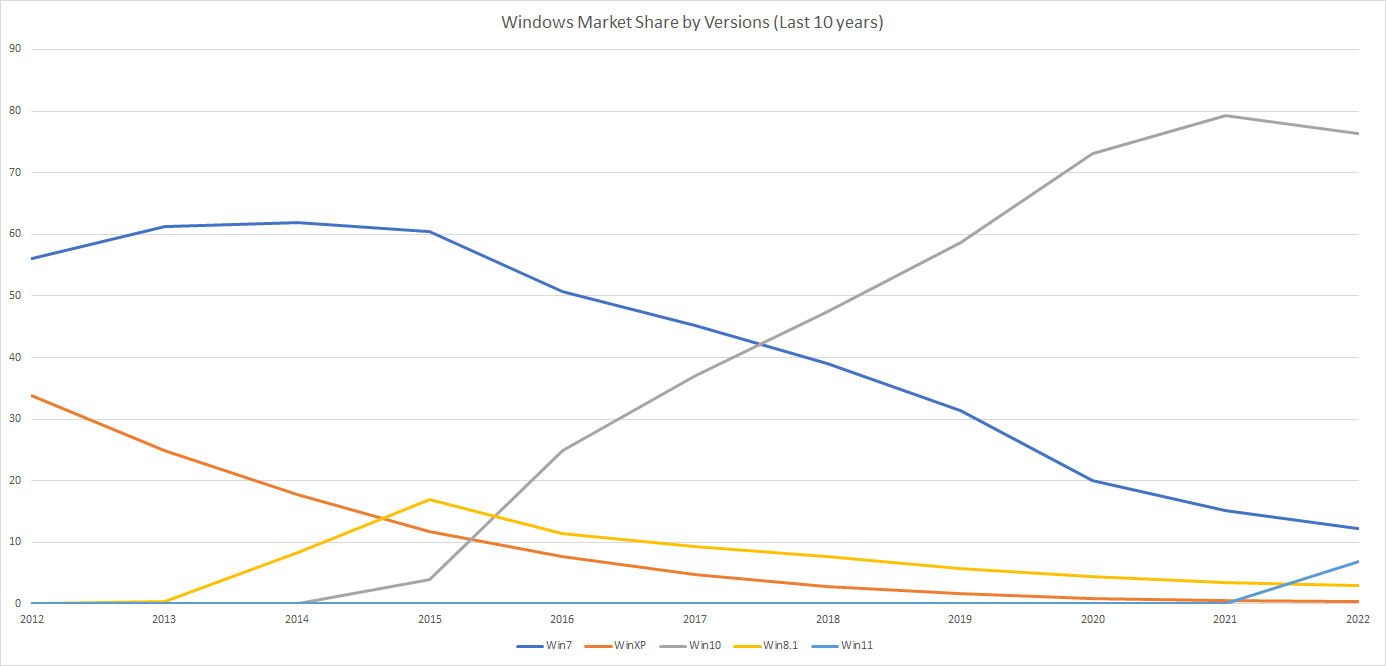
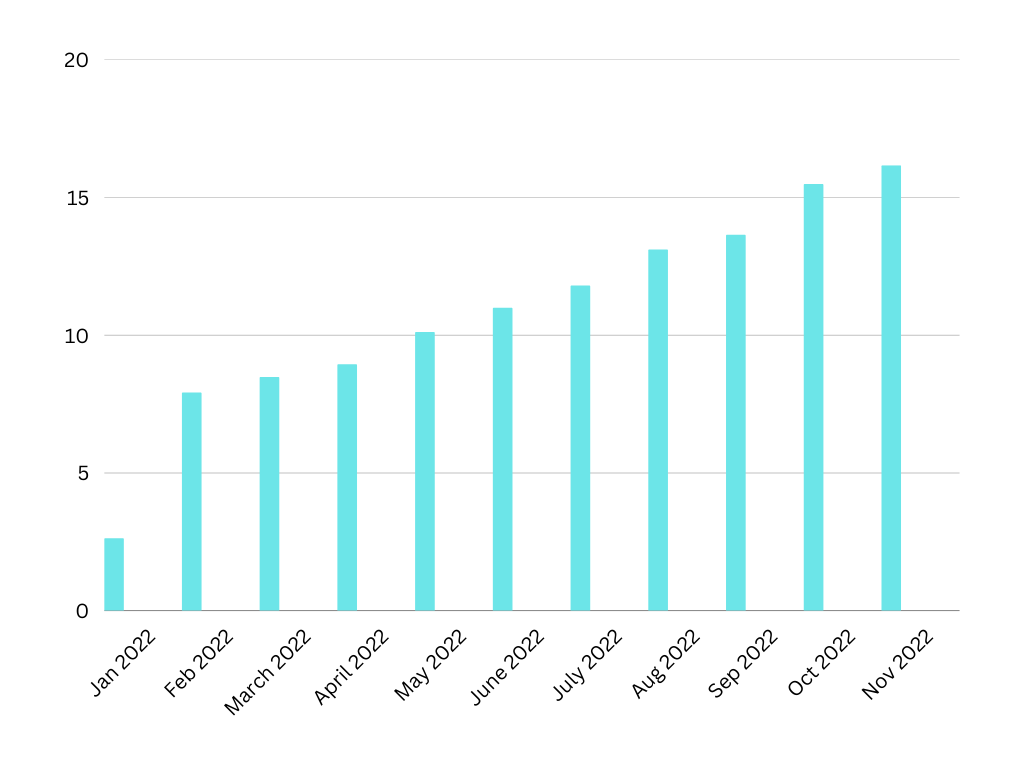
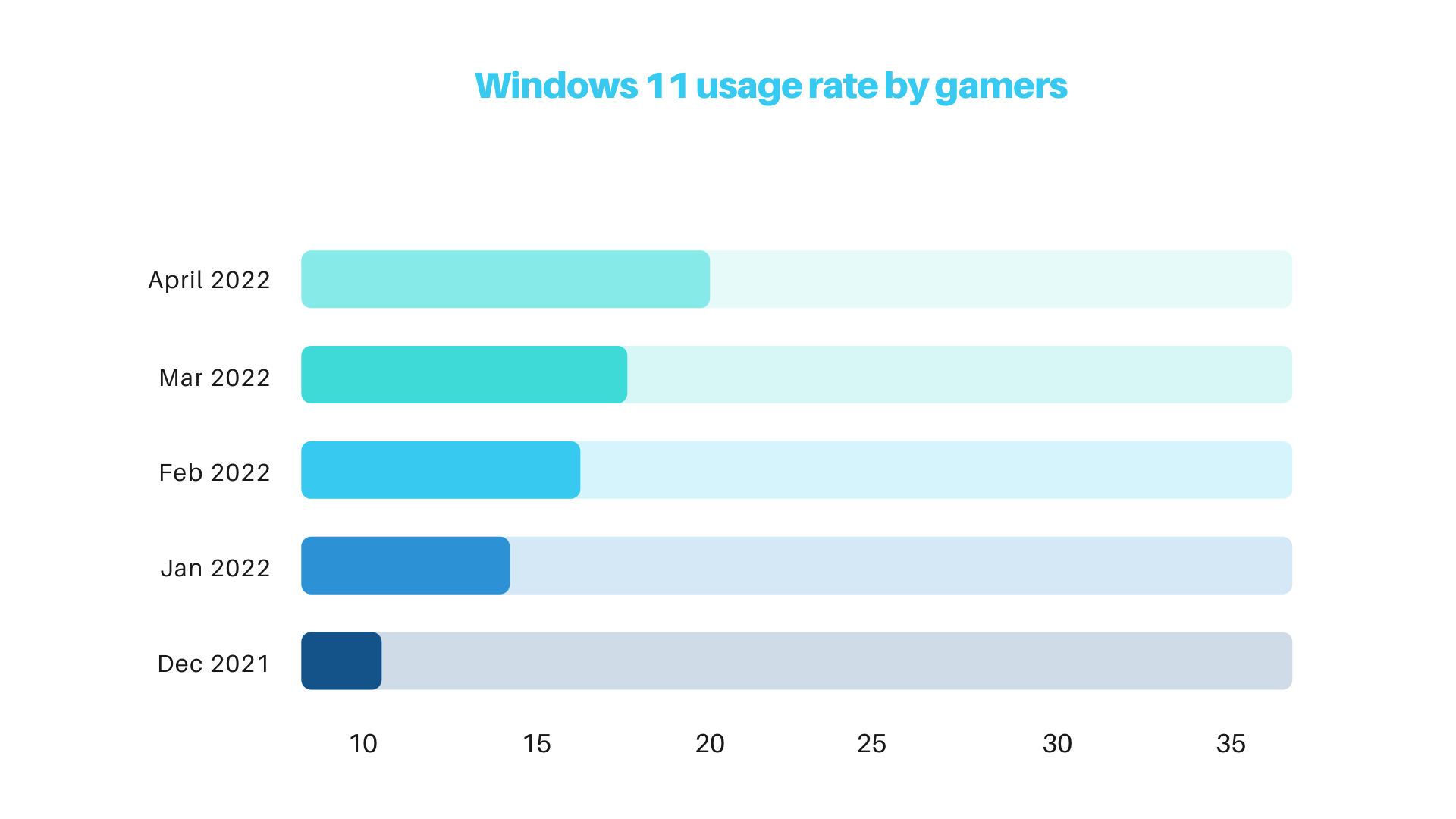
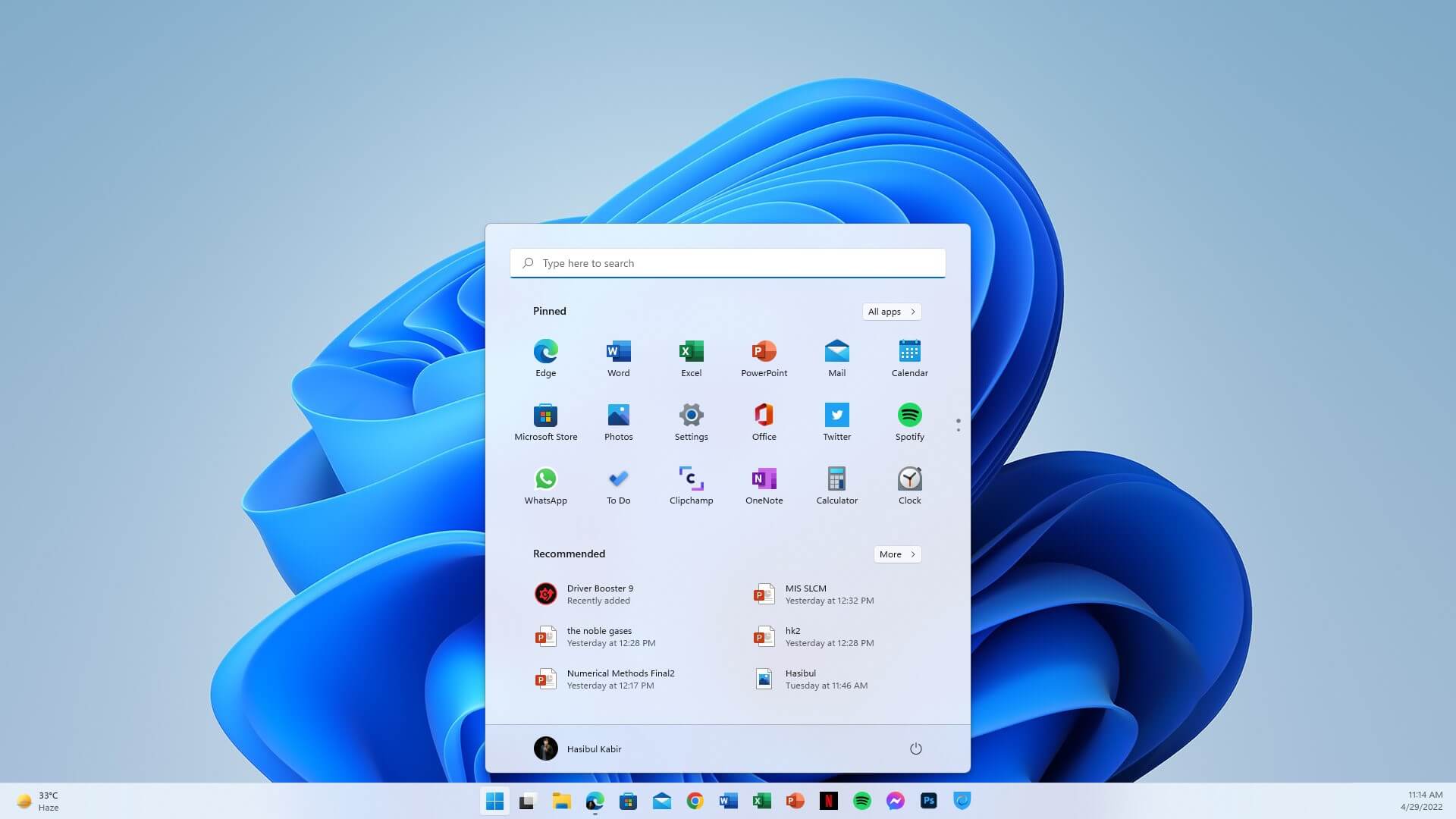
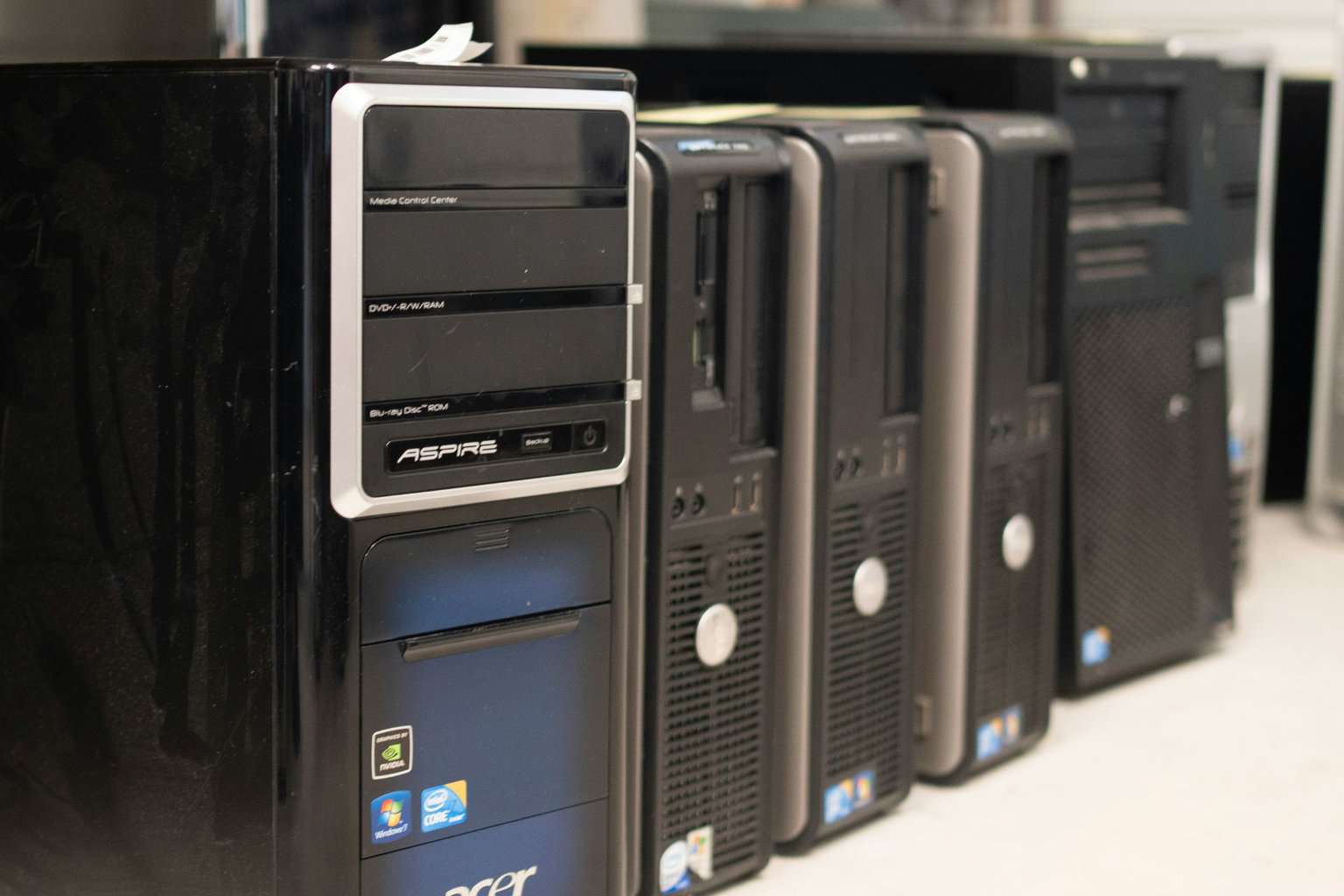
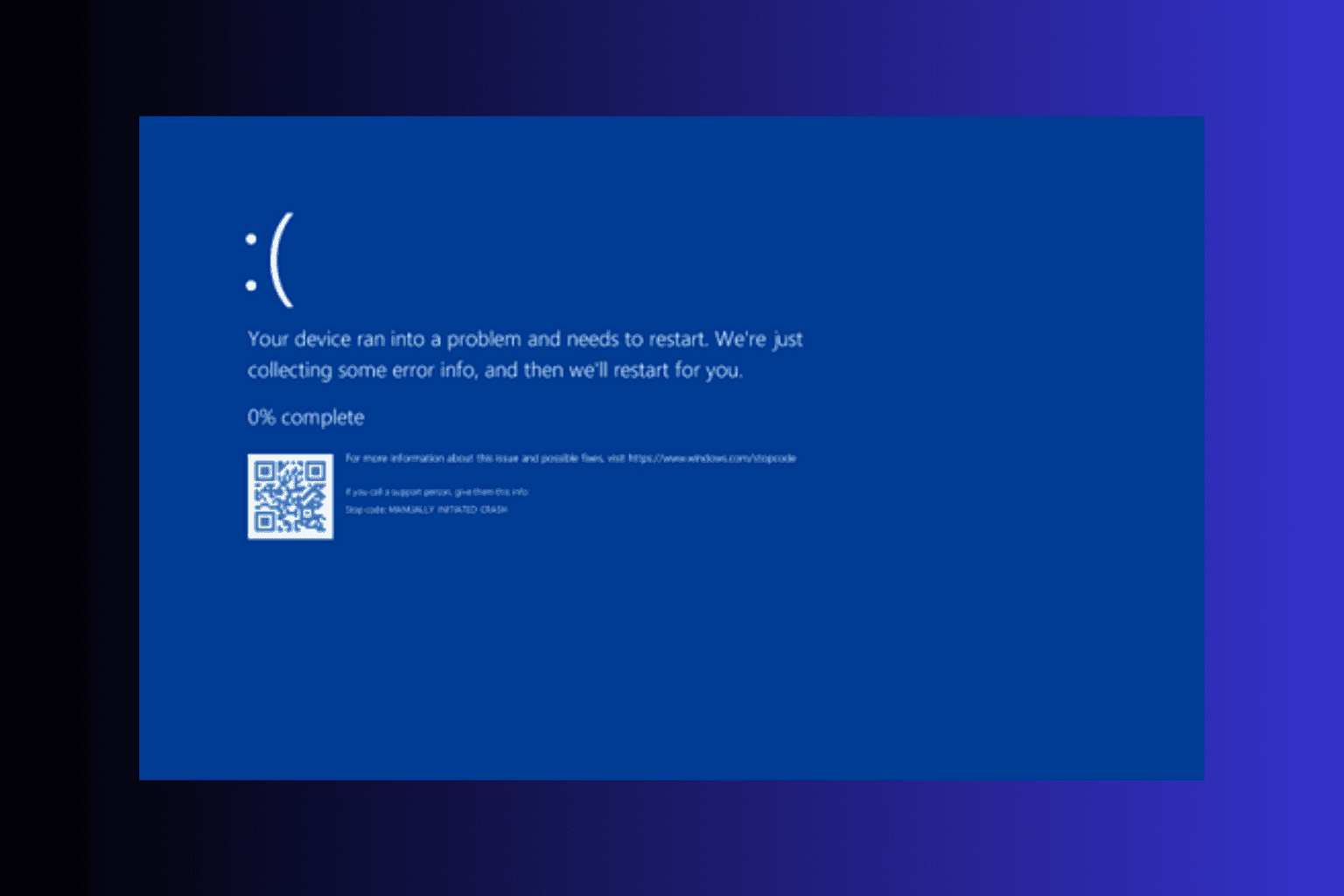
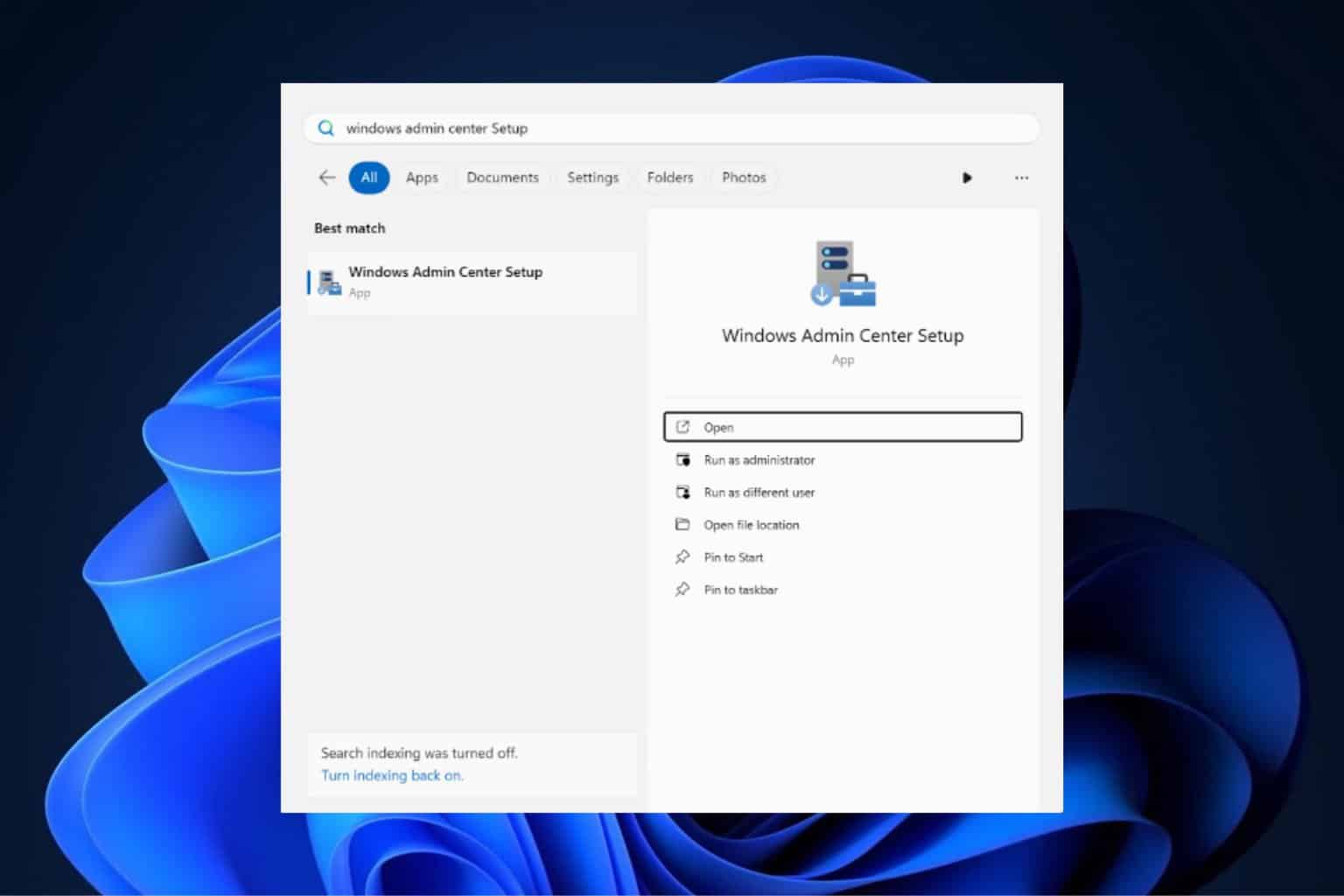
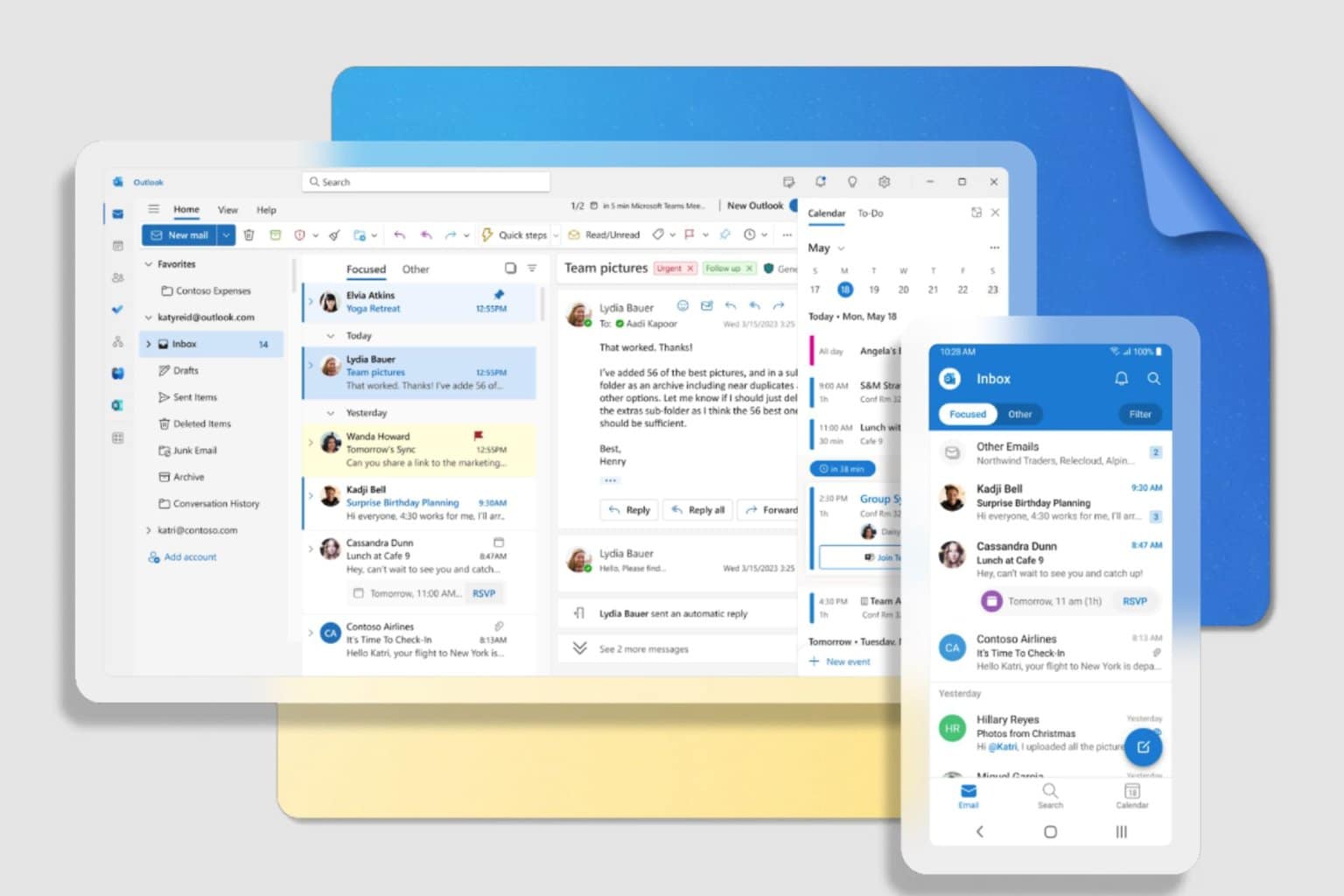


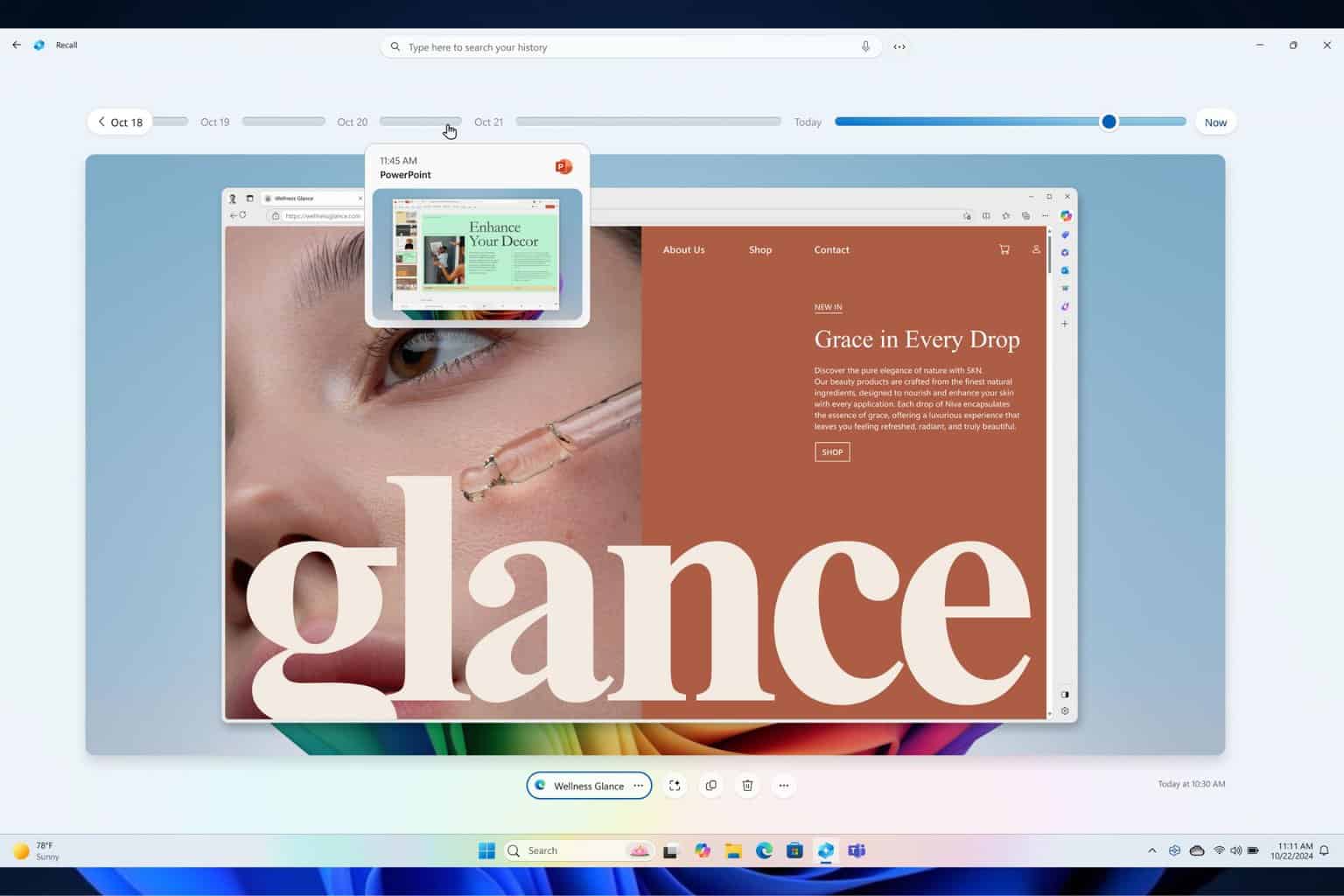
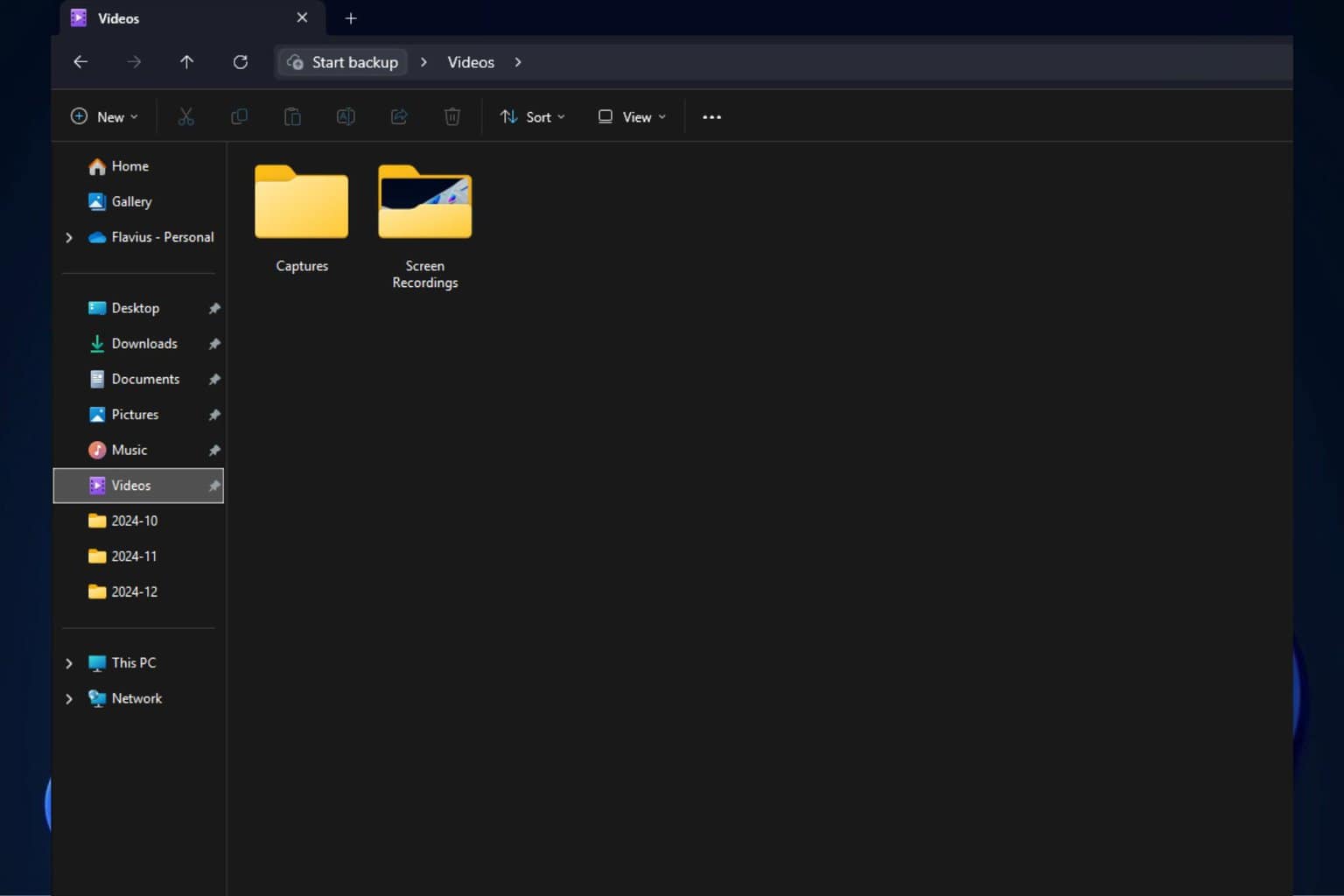
User forum
0 messages